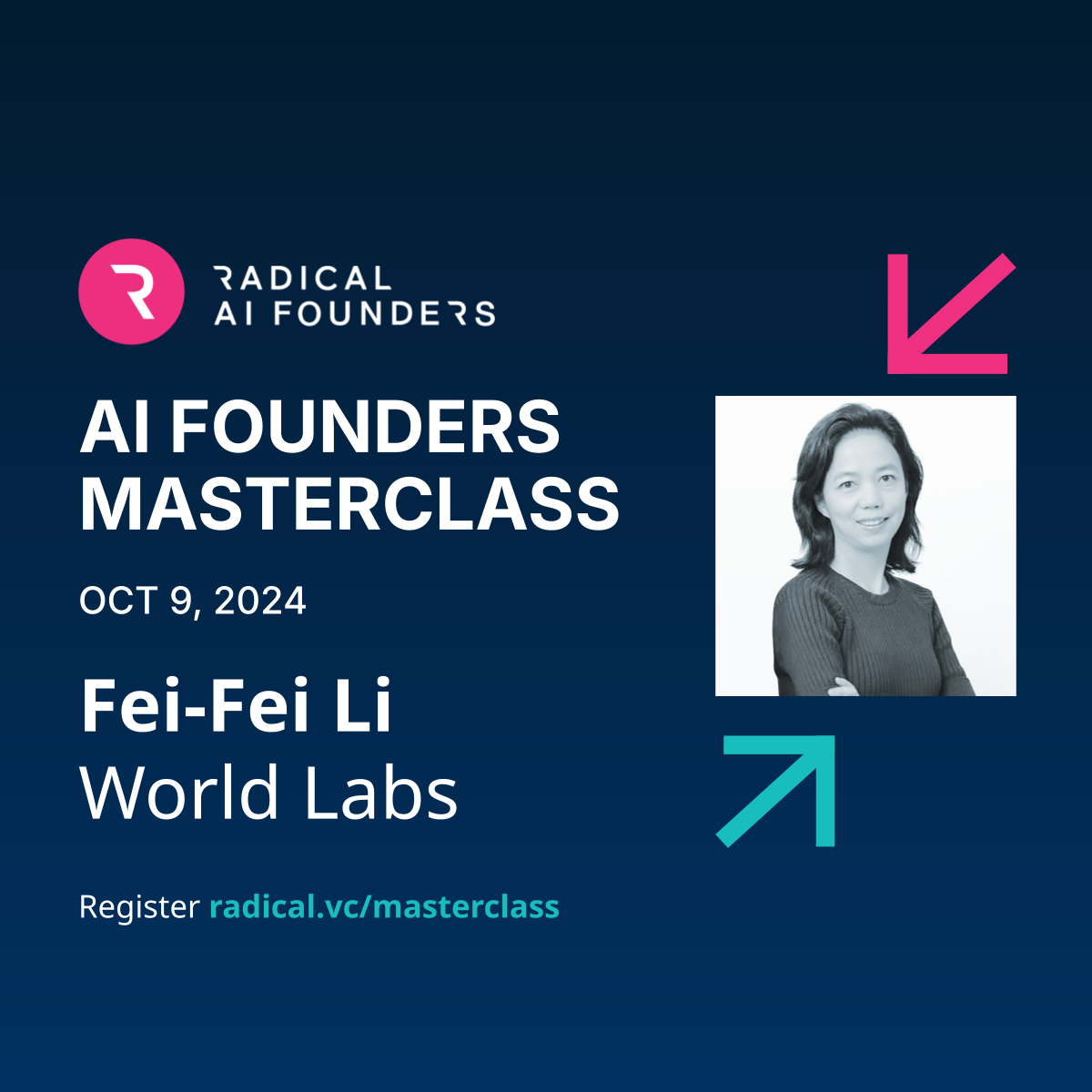Today we continue our Inflection Point series exploring the innovations that prominent founders and researchers are most excited about and how they anticipate AI addressing the greatest challenges facing humanity today.
Awais Ahmed is Founder and CEO of Radical Ventures portfolio company Pixxel, a space data company building a constellation of the world’s highest-resolution hyperspectral earth imaging satellites alongside analytical tools to mine insights from the data. Awais was recently named one of MIT Technology Review’s “35 Innovators Under 35” in the Climate and Energy category, adding to his appearances on Forbes’ “30 under 30” and Fortune’s “40 under 40” lists. We had the opportunity to discuss his future vision and how AI plays a pivotal role in Pixxel’s journey.
The following has been edited for length and clarity.
Radical: How does it feel to be named to MIT’s 35 Under 35?
Awais Ahmed: When I was a kid I wanted to attend MIT. While that didn’t happen, it’s nice to be recognized as part of the MIT innovators’ community.
I have always been drawn towards the cutting edge of technology, especially technologies that can help humanity move forward as a species. This included my obsession with space and astronomy and anything related to space tech. In university, I was able to work on space hardware that would go to space.
I competed in SpaceX’s Hyperloop Pod competition, partly for the small possibility of meeting Elon Musk, but mainly because it seemed like a technology humanity should be building in the 21st century (all economics aside). This experience helped me to feel confident as an innovator to be able to build satellites later at Pixxel. I believe that we’ve just gotten started; the road ahead is challenging but extremely exciting.
Radical: What is Pixxel’s vision for the world in ten years?
Awais Ahmed: We are operating right now at what is the intersection of space technology and Earth data. Ultimately, we want the planet to have a “health monitor,” enabling proactive actions for a more sustainable world.
This means tracking global changes happening due to global warming and human activity such as deforestation. Our vision is to provide the user with a sandbox environment, where they can query a wide range of data about our planet or plug and play with the models and data of their choice to help answer specific questions.
To achieve this, we are focused on deploying our constellation of cutting-edge satellites and software tools for easy and rapid data access. We build satellites. We operate them. We beam down data. And then we extract useful and, more importantly, actionable information from our analytics platform to make life on Earth more sustainable.
Radical: How are you using AI to achieve your vision?
Awais Ahmed: AI is fundamental to our vision. We provide intricate and detailed insights about our planet. The sheer volume and complexity of the data our satellites collect are beyond human capability to analyze manually.
Our AI algorithms sift through this vast amount of data to detect patterns, anomalies, and trends. This makes it possible for us to provide actionable insights in areas like agriculture, environmental monitoring, and mineral exploration. Additionally, using LLMs, we’re exploring ways to make our sandbox interactive allowing users to query Earth’s data using simple text. This could revolutionize the way people interact with geospatial data, enabling users to gain insights about the globe in real-time through conversational AI.
Pixxel has made significant strides in refining the integration of hyperspectral imaging and AI analysis. Our satellites can now capture a broader spectrum of light, enabling us to see nuances that were previously invisible. On the software front, we’ve developed a platform that not only uses AI for analysis but also constantly learns and improves based on new data.
Looking forward, as AI continues to evolve, we anticipate an even more symbiotic relationship between satellite technology and machine learning. Pixxel aims to be at the forefront of this convergence, both harnessing the advancements and actively contributing to shaping the future of AI in space analytics.
AI News This Week
-
Silicon Valley titans pledge ‘getting this right’ with AI (New York Times)
A three-hour meeting with lawmakers and tech leaders was held in A three-hour meeting with lawmakers and tech leaders was held in Washington to discuss AI and future regulations at the AI Insight Forum, organized by Senator Chuck Schumer. The executives highlighted various aspects of AI, from its risks, how it can solve health and energy issues, and the importance of open and transparent AI systems. The closed-door session focused on educating Congress about AI’s complexities and its transformative impact on various sectors. This past week also saw Fei-Fei Li, Director of Stanford’s Institute for Human-Centered AI and Radical Scientific Partner, testify before the Senate committee on Homeland Security where she discussed AI’s risks and potential.
-
How artificial intelligence can revolutionize science (The Economist)
AI could be a powerful tool in addressing humanity’s most pressing challenges, particularly by greatly accelerating scientific breakthroughs in fields like medicine, climate science, and green technology. Prominent figures in the AI field, like Demis Hassabis and Yann LeCun, believe that AI has the potential to propel scientific progress, ushering in a golden age of discovery. While previous technologies have been prematurely hailed as solutions to global issues, the idea that AI can drive transformative scientific advancements holds historical merit, as history has seen periods marked by advances in technology leading to groundbreaking discoveries.
-
Ban or embrace? Colleges wrestle with AI-generated admissions essays (New York Times)
Universities are confronting the challenge posed by AI-generated admission essays. The emergence of LLMs and their generative capabilities has raised concerns about the risk of generic or plagiarized content. While certain institutions discourage the use of AI, Georgia Tech recommends responsible utilization for brainstorming and enhancing ideas, but not for directly generating content. We explore the risks and opportunities for AI in education in our latest Radical Thinking article.
-
A test of artificial intelligence (Nature)
Benchmarking for artificial general intelligence (AGI), which goes beyond specific task-focused AI, remains a topic of debate. While contemporary large language models have demonstrated impressive capabilities in text generation and comprehension, critics still debate whether these models are capable of demonstrating true comprehension. In this article, multiple benchmarks and attempts to quantify a systems’ “understanding” are explored.
-
A deep learning model for measuring coral reef halos globally from multispectral satellite imagery (University of Hawaii)
Researchers from the University of Hawaii at Mānoa have developed an AI-based surveying tool that uses deep learning and high-resolution satellite imagery (like those provided by Pixxel) to monitor the health of coral reefs from the sky. This tool can identify and track coral reef halos, distinctive barren rings of sand around reefs, which can serve as indicators of ecosystem health. By analyzing these halos with AI, the researchers aim to enable real-time coral reef monitoring to address the global decline of coral reefs, threatened by factors like overfishing, pollution, and climate change. The AI tool can quickly and accurately detect these halos, making it a valuable asset for conservation efforts and marine ecosystem assessment.
Radical Reads is edited by Ebin Tomy (Analyst, Radical Ventures)





